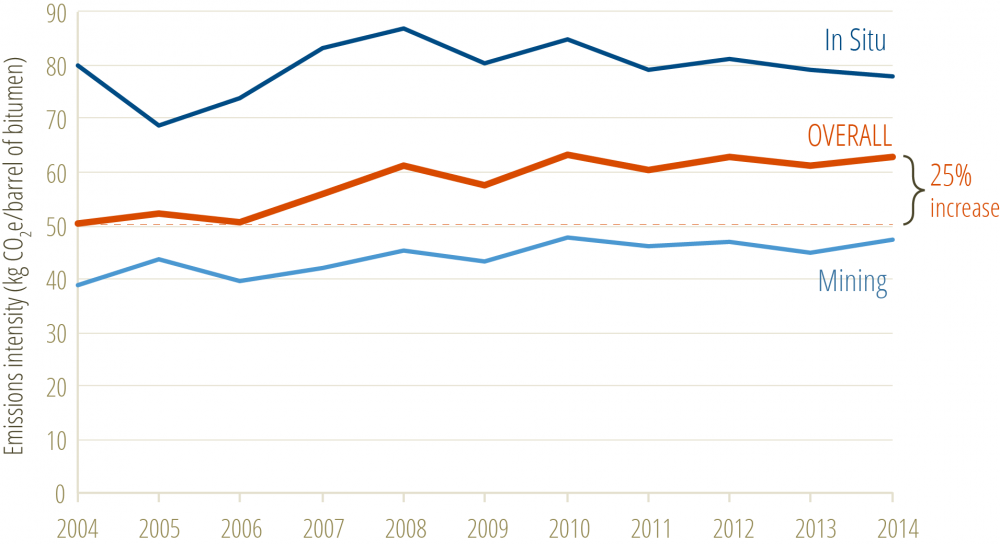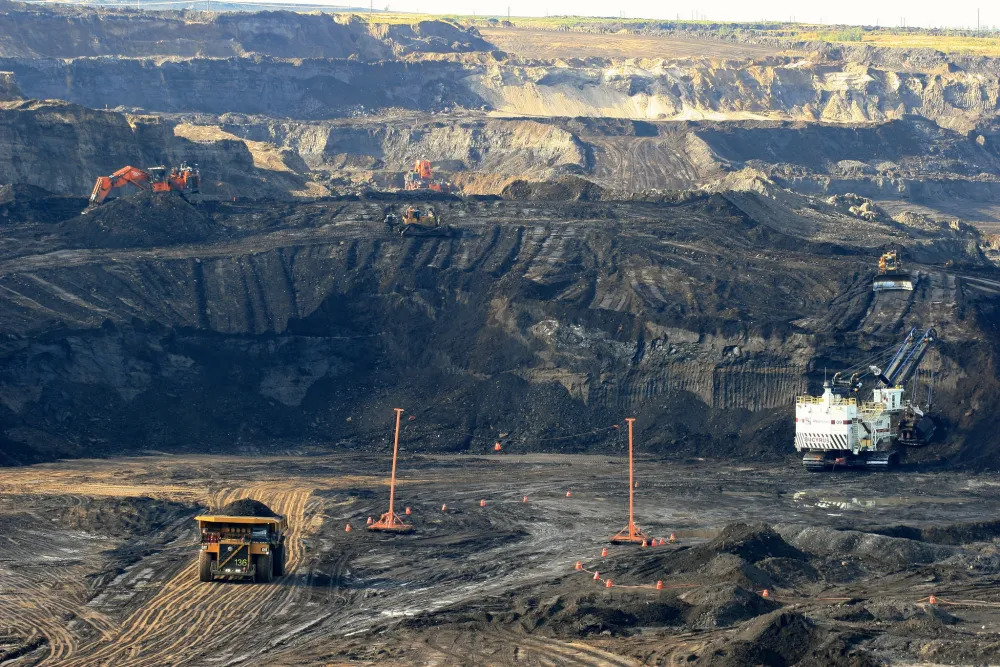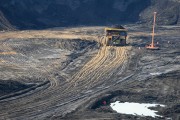Oilsands greenhouse gas (GHG) intensity is more important than ever with the announcement that Alberta’s Climate Leadership Plan will place new limits on emissions and set sector-wide performance goals. These policies provide the necessary incentive to enhance the sector’s GHG performance. Indeed, if industry cannot decrease the amount of GHGs produced per barrel, the oilsands GHG limit policy will ultimately inhibit production and operations unable to meet performance expectations will face additional financial obligations.
This new incentive for the oilsands sector to improve is good news, as despite past claims to the contrary, there was no improvement in overall oilsands emissions intensity between 2004 and 2014. In fact, the sector increased the overall amount of GHGs produced per barrel by 25 per cent over the last decade (figure 1). In other words, emissions from the sector on a whole have grown faster than oilsands production over the previous 10 years, the opposite trajectory that we should be on.

In light of this increase, what are we to make of the television ads by the Canadian Association of Petroleum Producers, federal briefing notes, and Internet memes that say remarkable technological improvements now allow the sector to develop responsibly?
The confusion is caused by the date that improvements are recorded against. “Since 1990” is a key phrase noted in these factoids, which blend historic actions with the current reality. Compared to operations 25 years ago, the oilsands industry did make some significant one-off improvements in emissions intensity when they were credited with moving to cogeneration, less carbon intensive fuels, and generally refining a new production technique. These were important steps, but irrelevant to discussions about whether the oilsands are still improving their performance now when there are plans for the sector to continue expanding.
What reasons might there be for the lack of recent improvements? The oilsands resource is not uniform. Companies naturally access the highest quality ore first, meaning there is declining availability of easily producible oilsands. In addition, as projects expand and move into those lower quality resources, the distance to processing facilities increases over time, also driving up energy use and emissions.
We are looking forward to seeing the sector make significant positive changes in its performance, driven by the policies announced in the Climate Leadership Plan. This plan helps guide developers to favour only the most efficient, least carbon-intensive operations and penalizes those unable to attain an appropriate level of performance to change the trajectory of our emissions. Muddying the waters by pointing to the sector’s “continued” improvement from a time when the industry was in its infancy is not helpful. It is a distraction from the real effort required to drastically improve the performance of the sector. It’s time to put away the sales pitches and really look at how the oilsands sector can fit in the carbon-constrained future.
For further information, including data and our analysis, please consult this fact sheet.










